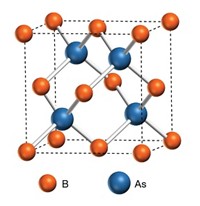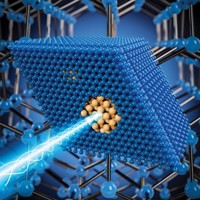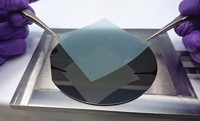Advertisement
Grab your lab coat. Let's get started
Welcome!
Welcome!
Create an account below to get 6 C&EN articles per month, receive newsletters and more - all free.
It seems this is your first time logging in online. Please enter the following information to continue.
As an ACS member you automatically get access to this site. All we need is few more details to create your reading experience.
Not you? Sign in with a different account.
Not you? Sign in with a different account.
ERROR 1
ERROR 1
ERROR 2
ERROR 2
ERROR 2
ERROR 2
ERROR 2
Password and Confirm password must match.
If you have an ACS member number, please enter it here so we can link this account to your membership. (optional)
ERROR 2
ACS values your privacy. By submitting your information, you are gaining access to C&EN and subscribing to our weekly newsletter. We use the information you provide to make your reading experience better, and we will never sell your data to third party members.
Materials
Silicon Turns Into Superconductor
Extreme boron doping transforms archetypal semiconductor at ambient pressure
by Bethany Halford
November 27, 2006
| A version of this story appeared in
Volume 84, Issue 48

With a massive blast of boron, mild-mannered silicon, best known for its mediocre ability to conduct electricity, can be strong-armed into shuttling electrons virtually resistance-free (Nature 2006, 444, 465). Scientists have been trying to get silicon to make this semiconductor-to-superconductor transformation for 60 years.
Inciting a metamorphosis reminiscent of comic-book superheroes, a group led by Grenoble, France-based researchers Etienne Bustarret of the National Center for Scientific Research (CNRS) and Christophe Marcenat of the French Atomic Energy Commission (CEA) immersed a silicon film in BCl3 gas and then blasted it with high-intensity laser light. With each blast, more and more boron was forced into the silicon until the boron concentration reached several percent. The researchers then cooled the film until they observed superconductivity just above absolute zero—at about 0.35 K.
The extreme temperature "raises questions as to how useful this turncoat-silicon might be," notes Princeton University solid-state chemist Robert J. Cava in a commentary that accompanies the report. "But its existence is impressive in its own right," he continues, adding that the successful transformation itself is a "breakthrough."
The authors, Cava explains, "are motivated by the possibility that, if silicon could be made superconducting—even under conditions too extreme to be useful in practical devices—the integration of superconducting silicon into the sophisticated world of microelectronics processing might uncover new electronic functions."
Cava wonders what would happen if, instead of superdoping with electron-poor boron, the team used electron-rich arsenic or phosphorus. Could they make an electron-rich silicon superconductor? "That would allow the gamut of microelectronics concepts and processing to be applied to superconductors," he says, "but is far from an obvious extension of the present work."





Join the conversation
Contact the reporter
Submit a Letter to the Editor for publication
Engage with us on Twitter